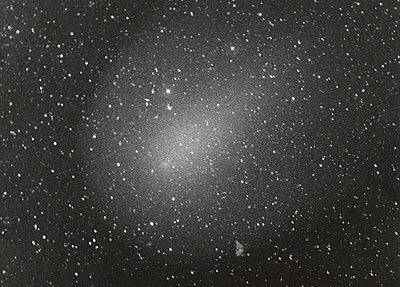January 3
Comet Holmes is still visible to the naked eye.
Comet Holmes experienced unprecedented outbursts in October
last year. In the new year it is still visible to the naked eye in the
northern sky. When I observed it by the naked eye at 21:00 on January 3,
the comet had become definitely fainter than the Double Cluster in Perseus
at 3.9 magnitude, but only slightly fainter than M31, the Andromeda Galaxy.
Naturally, a comet becomes fainter as its distance from the sun increases.
But the total magnitude of Comet Holmes has not decreased much since mid
December. My observation of this phenomenon is that the brightness of this
comet has not diminished much because the light-reflecting surface area
has expanded as the size of the coma increases, though the surface brightness
has fallen. In the 60cm reflector the nucleus has become increasingly dim
and it is now fainter than 13th magnitude. This stellar nucleus is embedded
in a smaller coma and the comet takes on an extremely strange appearance
that a small comet resides in a large coma. The diameter of the "outer
coma" captured by the 21cm f/3 Epsilon telescope reaches astonishing
71 arc minutes.
On the comet's next return the large outer coma will have
disappeared and the small comet inside the large coma will return. I am
looking forward to finding out what the comet will look like and how bright
it will be on its next return.
The image below is a black-and-white photograph taken by
the low f-ratio 21cm Epsilon telescope. A strange faint coma is visible
together with a very faint nucleus at the center.

17P/Holmes
17-minute exposure from 21:20, January 3,2008 J.S.T.
21cm f/3 refractor, ISO 1600 film

